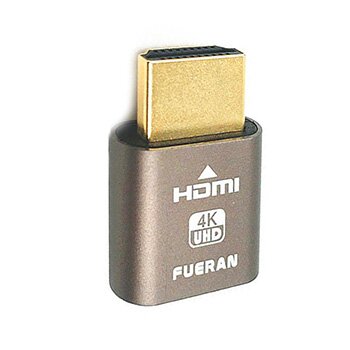
V SYSTEMS and X-VPN Revamp TCP/IP to Launch Blockchain-Powered Internet Protocol
Bitcoin mining is a peer-to-peer computer process to make the Bitcoin transactions safe. Miners keep the network secure by approving only verified transactions. Mining also releases new Bitcoin to the public ledger called as the blockchain. As you may have learnt by now, regular cryptocurrency mining implies validating transactions on the blockchain by solving complex mathematical problems.
Mining gives legitimacy to Satoshi Nakamoto’s vision, enabling a decentralised and democratic system to manage Bitcoin and other cryptocurrencies. Crypto mining is all about contributing time and energy to the blockchain-powered digital ledger. Mining provides bookkeeping services to the crypto’s network, with the help of computer hardware.
How to Store & Secure Crypto on a Ledger Nano S…
But in order to secure these transactions, someone needs to dedicate computing power to verifying the activity and packaging the details in a block that goes into the bitcoin ledger. As a reward for doing the work to track and secure transactions, miners earn bitcoins for each block they successfully process. And even though mining was popularized by bitcoin, a lot of cryptocurrencies use the same system to secure their blockchain.
Mining in the context of cryptocurrency is what powers the blockchain. Miners use computers to calculate complex cryptographic algorithms to un-crack code. This process confirms all crypto transactions and adds them to the blockchain for the public record. Participants with a small percentage of the mining power stand a very small chance of discovering the next block on their own.
In the same way that people used to (and, let’s be honest, still do) store their money in bank accounts and receive interest on their deposits,crypto interest accountsare a new and exciting model for the blockchain industry. This model is often done to in different ways, including interest-earning accounts. Some people also refer to this simply as lending out your Bitcoin. In the end, the result is the same — by transferring your Bitcoin or other cryptocurrencies to the financial service provider, you will earn interest on your Bitcoin over time. While it’s fairly easy to set up and use a bitcoin mining rig, actually making money on the process is something of a challenge.
Which is why Graphical Processing Units (GPUs) and Application-Specific Integrated Circuit (ASIC) are the front runners in cryptocurrency mining. Miners are responsible for solving complex mathematical problems using mining software. This is how a transaction is verified on the network and sent to the blockchain. According to Blockchain.info, blocks can hold thousands of transactions.

There will eventually come a time when bitcoin mining ends; per the Bitcoin Protocol, the total number of bitcoins will be capped at 21 million. Joining a pool allows you to utilise your equipment and collaborate, instead of competing, with other miners.
The pool works collectively towards creating new blocks, and normally require that you contribute a minimum of 4% of the overall processing power to join in. By joining Bitcoin mining pools, the probability that you will earn smaller, but more frequent returns is much higher, than if you were to go at it alone. Mining pools are groups of miners who share their computational power to mine cryptocurrencies in a short amount of time.
Because more and more people are signing up to mine bitcoins, the mining process continues to get more difficult and will likely keep doing so for some time. That means the hardware you bought last year to mine bitcoins probably won’t be up to the job a year from now.
How do you start crypto mining?
Crypto mining is a computational process using complex computer hardware that deals with a series of mathematical equations. The main goal is to verify all the transactions that are present in the digital ledger, this is rewarded with more crypto-coins. Doing so makes you a vital part of the network.
- Mining in the context of cryptocurrency is what powers the blockchain.
There are less altcoins you can mine with GPU every day as the mining industry consolidates and professionalizes, small miners need to join bigger pools to get at least crumbs of rewards. Image courtesy of Blockchain.info.BTC.com is owned by Bitmain, a company that manufacturers mining hardware, and charges a 1.5 percent fees — placing it squarely in the middle-tier in terms of fees. When you participate in Bitcoin mining, you are essentially searching for blocks by crunching complex cryptographic challenges using your mining hardware. Bitcoin block rewards are the new bitcoins that are awarded by the blockchain network to eligible cryptocurrency miners.
The rewards are shared among the members according to the specified rules. Once you join a pool, follow the instructions provided by the software to start mining right away. Some of the famous mining pools include Slush Pool, AntPool and BTC.com. Owing to low processing power, an average computer is unable to mine blocks for cryptocurrencies such as Bitcoin and Ethereum.
Crypto Mining in a Nutshell
For instance, a mining card that one could purchase for a couple of thousand dollars would represent less than 0.001% of the network’s mining power. With such a small chance at finding the next block, it could be a long time before that miner finds a block, and the difficulty going up makes things even worse. Mining pools are operated bythird partiesand coordinate groups of miners.
How do you mine Bitcoin for Dummies?
Miners make Bitcoin by finding proof of work and creating blocks, with the current number of Bitcoins the miner receives per block creation standing at 12.5 coins and then the transaction fees for each block, which is approximately 1.5 Bitcoin equivalent in value for each block.
Crypto miners are incentivized to complete the computer processes with what are called “block rewards,” which give miners free Bitcoin or other crypto in exchange for their efforts. The difficulty of crypto mining can go up or down depending on how many people are mining that blockchain or how congested the transaction network is.
This process uses your computer processor or your GPU power and consumes a significant amount of energy. Because of how blockchain transactions are structured, they’re extremely difficult to alter or compromise, even by the best hackers.
By working together in a pool and sharing the payouts among all participants, miners can get a steady flow of bitcoin starting the day they activate their miner. Statistics on some of the mining pools can be seen onBlockchain.info. Bitcoin mining is a critical cog in the cryptocurrency machine since it is the process which validates transactions and secures the Blockchain from unlawful interference.
The Cryptocurrency Mining Process
When there is more computing power collectively working to mine for bitcoin, the difficulty level of mining increases in order to keep block production at a stable rate. To get a sense of just how much computing power is involved, when Bitcoin launched in 2009 the initial difficulty level was one. The rewards for bitcoin mining are halved every four years or so. When bitcoin was first mined in 2009, mining one block would earn you 50 BTC. By 2016, this was halved again to the current level of 12.5 BTC.
Although early on in bitcoin’s history individuals may have been able to compete for blocks with a regular at-home computer, this is no longer the case. The reason for this is that the difficulty of mining bitcoin changes over time. In order to ensure smooth functioning of the blockchain and its ability to process and verify transaction, the Bitcoin network aims to have one block produced every 10 minutes or so. However, if there are one million mining rigs competing to solve the hash problem, they’ll likely reach a solution faster than a scenario in which 10 mining rigs are working on the same problem. For that reason, Bitcoin is designed to evaluate and adjust the difficulty of mining every 2,016 blocks, or roughly every two weeks.
CryptoSlots Launches Epic New Slot Series with Increased Welcome Bonus
In about 2020, the reward size will be halved again to 6.25 BTC. As of the time of writing, the reward for completing a block is 12.5 Bitcoin. In November of 2019, the price of Bitcoin was about $9,300 per bitcoin, which means you’d earn $116,250 (12.5 x 9,300) for completing a block. Aside from the coins minted via the genesis block (the very first block, which was created by founder Satoshi Nakamoto), every single one of those bitcoin came into being because of miners. In the absence of miners, Bitcoin as a network would still exist and be usable, but there would never be any additional bitcoin.


